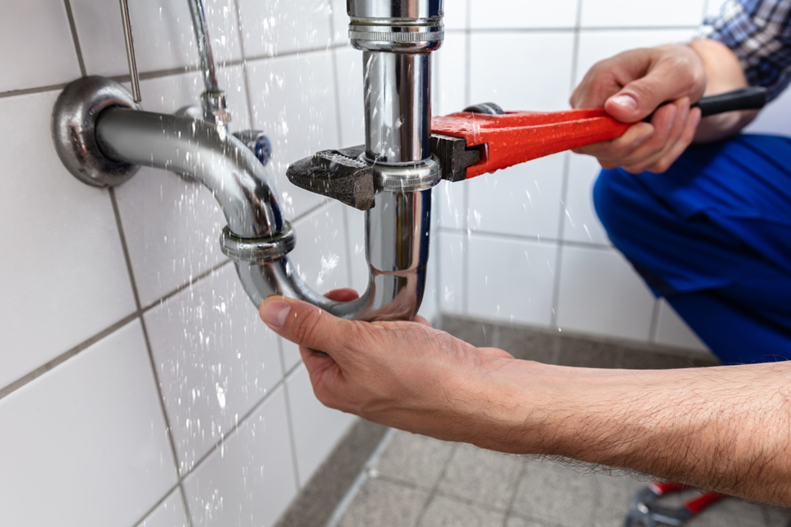Do You Have Leaky Pipes in Your Home? Take These 7 Steps to Find Out
The US plumbing industry brings in over 100 billion dollars per year. While that average may have been shaken due to COVID, at the end of the day, people are still phoning plumbers regularly to help bail them out of inconvenient situations.
What kind of situations are we talking about? In part, leaky pipes.
Leaky pipes are the scourge of homeowners because they can be costly to fix, costly to keep, and can cause serious damage to properties.
If you suspect that you may have leaky pipes or if you just want to be preemptive in determining that you don’t, our team has you covered. Keep reading to take in 7 ideas/steps you can use to get to the bottom of your pipe questions.
1. Consider Your Usage History
The first clue homeowners get regarding whether or not they have pipe problems is their water bill. If you’ve enjoyed $50 bills for the last 6 months and suddenly, the last two months, find your bill is $100, you’ve got a problem.
Most water bills won’t vary much notwithstanding seasonal shifts (more water is used during the summer). So, if a serious shift in your usage doesn’t make sense in the context of your history, it’s time to type “find a plumber near me” into Google to see who can help.
2. Do the Toilet Test
Did you know that a huge portion of your monthly water use comes from your toilet? That’s why we always advise that when people are hunting down leaky pipes, they start with that porcelain bowl in their bathrooms.
Testing for toilet leaks is a relatively simple process if you have some food coloring handy. All you need to do is put a few drops into your top bowl to dye the water. Then, after 15 minutes, if you notice that any of your coloring has made it into your bottom bowl, you know your toilet is leaking.
3. Look for Soil Abnormalities
Many of a home’s worst leaky pipes are busted outside of the property and somewhere in the front/back yard. These leaks can be harder to find but your topography can give you some clues on where to start looking.
For example, if you’re seeing a patch of grass growing much better or fuller than the rest of your lawn, it could be that your grass is taking in water from a busted pipe. Conversely, if you see a patch of ground that is dead, depressed, or muddy, you may have a large underground leak that’s over-watering and ruining the turf around it.
4. Tap Your Neighbor
Depending on the way that your city has its water infrastructure laid out, it may be that a leak is occurring in a section of shared piping you and your neighbor both rely on. By that standard, if you’re experiencing leaky pipe suspicions, your neighbor may be going through the same issue.
Tap your neighbor to see if they’re noticing any abnormalities in their water bill. If not, ask them if their water pressure has suddenly dropped off.
Anything that suggests you’re both having water troubles could mean that the city needs to step in to assess mainline issues.
5. Scan for Mold
Leaky pipes that are living in the walls of your home can do severe damage to your walls. This is where much of the pipe fixing expense comes from since re-inputting insulation, drywall, etc. can add up.
If you’re noticing odd smells coming from certain areas of your house, it could be that wood is rotting or mold is growing in your walls. Eventually, that mold/damp will start to become apparent to the naked eye. That will help you determine where action needs to be taken on bad piping.
The moment you notice mold or wet patches in your wall is the moment you need to get to work. The longer you wait to dry wet areas and fix offending pipes, the more expensive it will be to tackle the issue when you get around to it.
6. Test Your Meter
After scouting your house and running various DIY tests, you may still not be able to source a leaky pipe. As a final measure, we recommend running a meter test.
Turn off all of the water in your home. After, head out to your water meter and take note of where it’s sitting.
Leave your home for an hour and ensure that no water is run during that time. If you come back and find your meter has gone down, you absolutely have a leak.
7. Talk to a Professional
Whether you’ve found your leaky pipe and need help fixing it or you need help sourcing your leak, a professional can help. Professional plumbers are well versed in figuring out piping problems. They can opine on how best to fix them and get repairs done, fast.
By bringing on a plumber as soon as possible, you’ll save yourself time and your home from incurring potentially serious damage.
Leaky Pipes Hurt Your Wallet, Home, and Health
If you suspect you have leaky pipes, make getting to the bottom of the problem a priority. Not only are leaky pipes a nuisance to your wallet but as we’ve suggested, they can hurt your home’s internals and can even wreak havoc on your family’s health by promoting the growth of mold.
We wish you the best as you work to tackle your common issues with piping.
Would you like more insight on leaks or graver plumbing nightmares? If so, head back to our blog directory to check out additional content.

